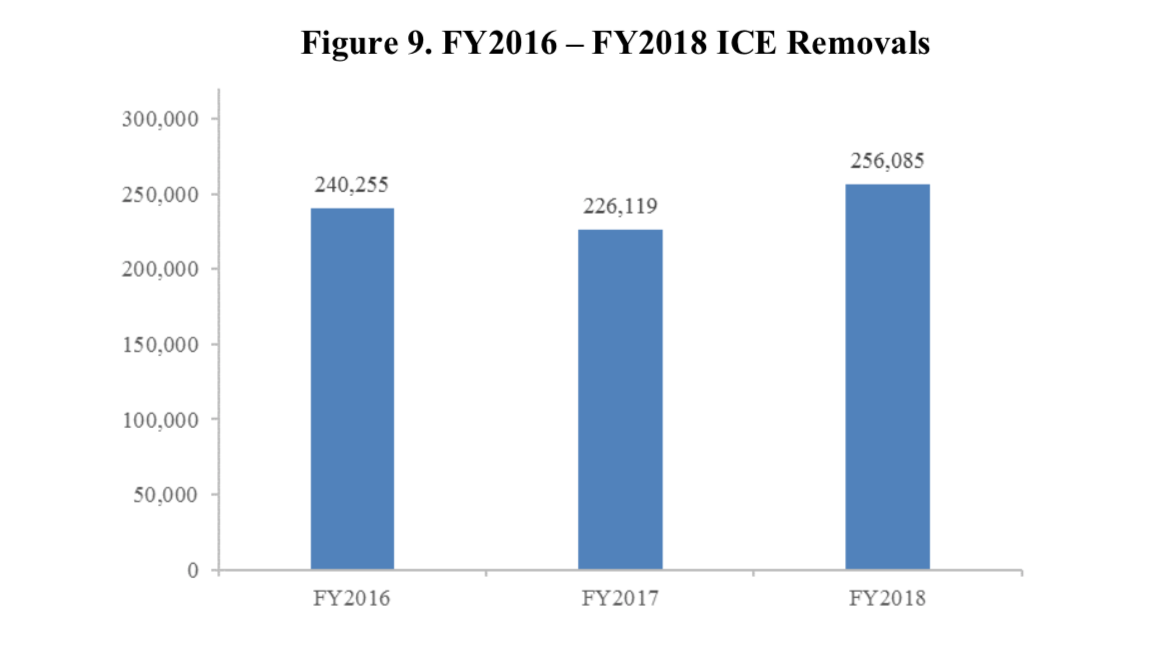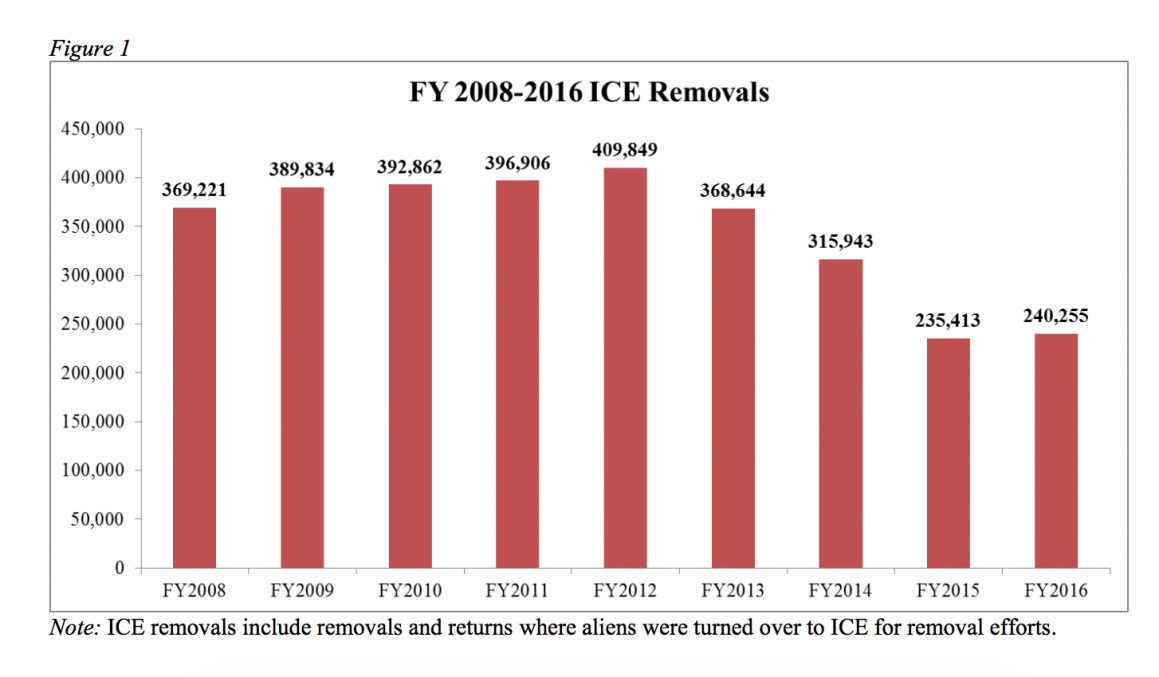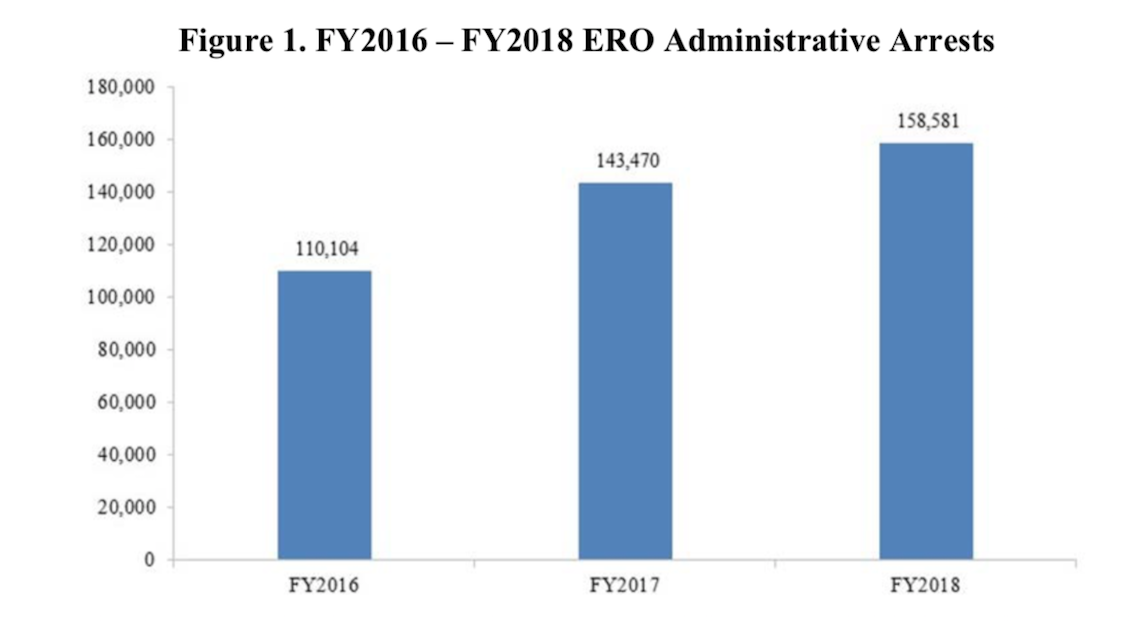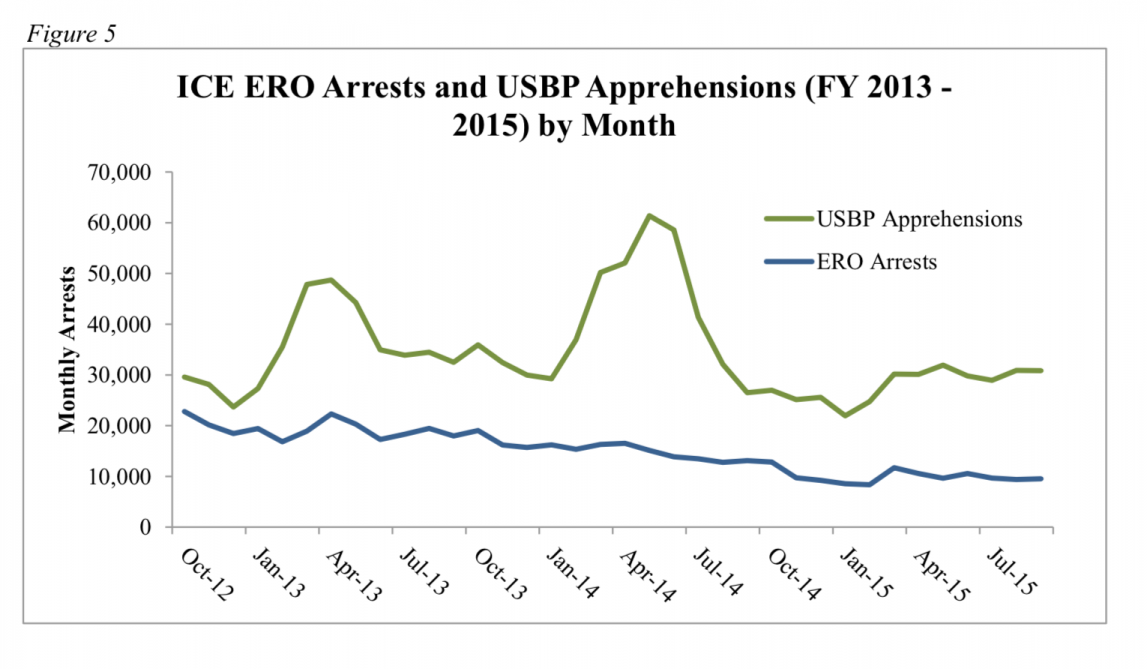Last week, U.S. Immigration and Customs Enforcement (ICE) released its Fiscal 2018 Enforcement and Removal Operations Report (full document below).
Across the last two fiscal years, it is true that ICE removal have increased from 226,119 removals to 256,085. It is also true that the Fiscal Year 2018 figures are higher than the FY 2016 number of 240,255 removals.


Across 10 years, however, FY 2018’s 256,085 removals are the fourth lowest year. The highest years since FY 2008 were the first four years of the Obama administration, with FY 2014 (also under the Obama administration) being the sixth highest. In fact, FY 2012’s 409,849 removals are still the highest year. As this figure from ICE’s 2016 report shows:


In addition, despite seeing apprehensions rise over the last three years, as seen in the next figure below, the number of apprehensions still do not match pervious years in the Obama administration, as seen in the second figure below. We understand that ICE reports under the Obama administration were organized differently than those from the Trump administration, so there is some apples to oranges comparison here, but looking at the statistics, there is still enough data to support the fact that there were more apprehensions during the Obama years than during the Trump years.
Yes, it is true that ICE arrests have increased since Fiscal Year 2016…


…But they still do not compare to the close the 15,000-20,000 monthly average arrests from Fiscal Years 2013–2015. Arrests during those years would average between 150,000 and 240,000 arrests, as following figure from a previous ICE report shows.


The decrease in removals and arrests over the last 10 fiscal years would suggest that unauthorized immigration is decreasing in the U.S., and November data from Pew would confirm that. Less removals and less arrests would support Pew’s conclusions.
Nonetheless, it is still important to note the ICE is using the 2018 report to congratulate itself for being tough on enforcement and following President Trump’s new directives, stating: “ICE ERO continued efforts under the direction of the 2017 EO and implementation memorandum by placing a significant emphasis on interior enforcement by protecting national security and public safety and upholding the rule of law. This report represents an analysis of ICE ERO’s FY2018 year-end statistics and illustrates how ICE ERO successfully fulfilled its mission while furthering the aforementioned policies.”
So the question remains: if the unauthorized population is shrinking, but the level of enforcement is not, does it suggest that ICE has way more resources to conduct its operations? Is ICE at a level where it can hyper-enforce immigrant communities? Very likely.
Here is the full 2018 report from ICE:


